The Musical Director
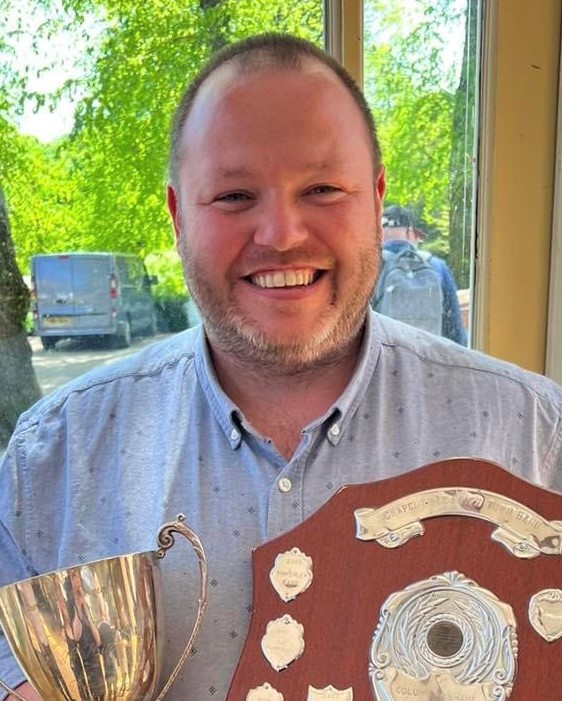
The Musical Director is responsible for all things musical. There’s more to it that standing out front and wagging a stick. They choose the pieces, develop the sound and style of the band, and work with the Band’s Management Team to ensure that engagements develop the band.
The Front Row
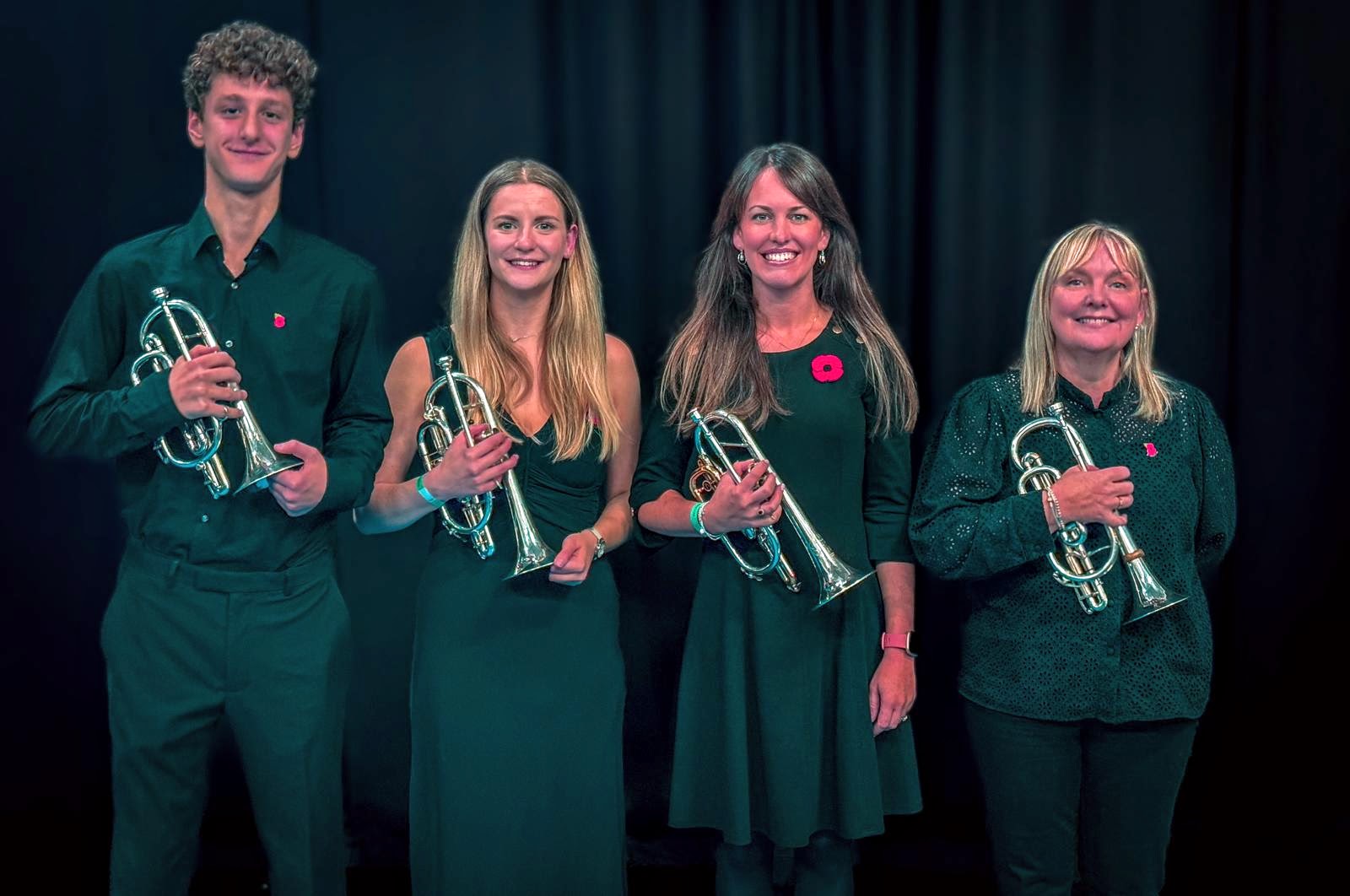
The Front Row Cornets consist of 4 players. The Solo cornets most often play the melody line of the music. The Principal Cornet is the leader of the band and often plays solos, duets or trios either with the other solo cornets or with other solo instruments.
- Principal Cornet – Katie Tyson-Phillips
- Solo Cornet 2 – Ella Renwick
- Solo Cornet 3 – Elia Karim
- Solo Cornet 4 – Dave Hardman
- Solo Cornet 5 – Simone Clarke
The Back Row
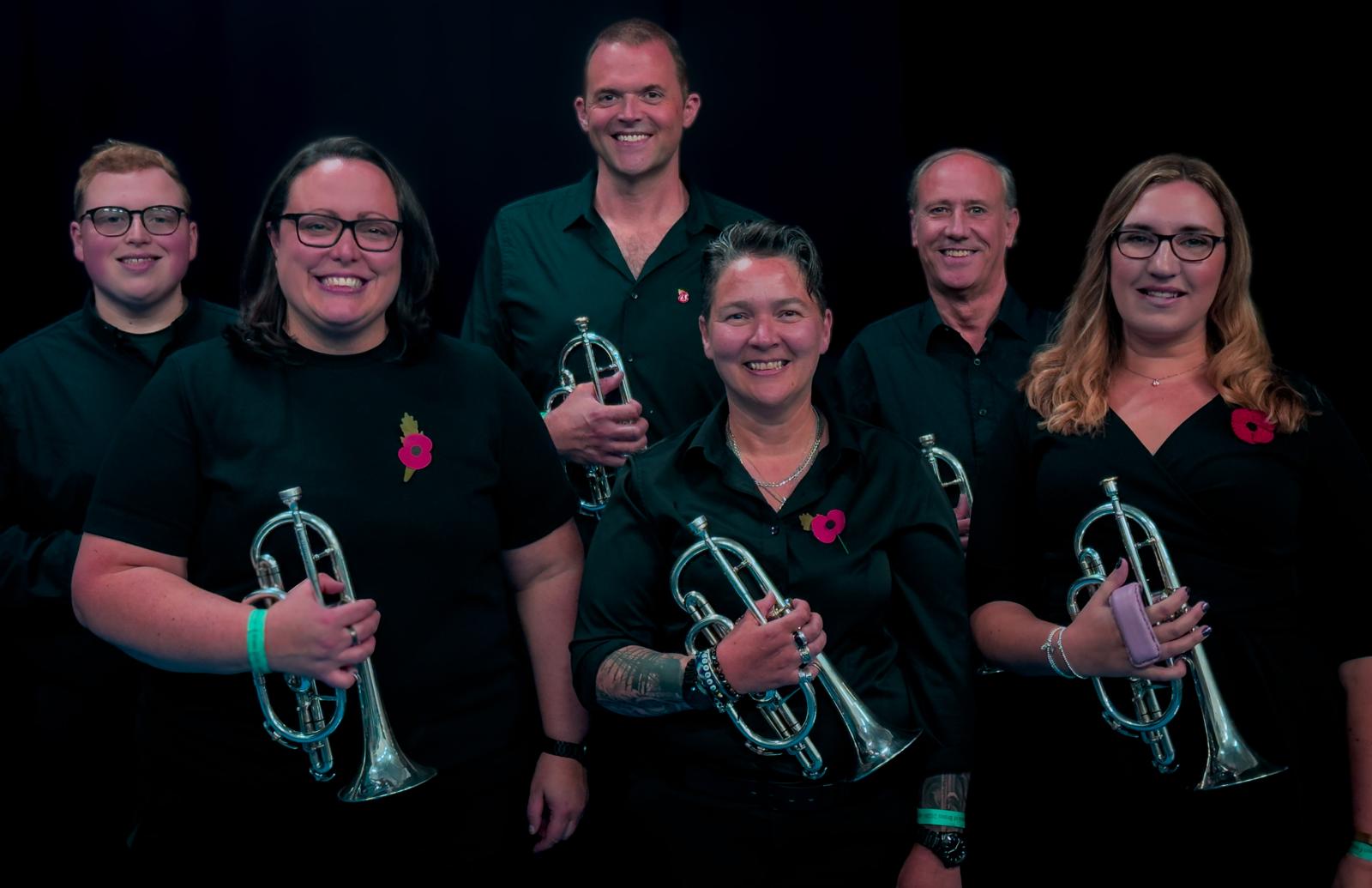
The Back Row consists of the Soprano, Repiano, two 2nd and two 3rd Cornets. The Soprano is slightly smaller than the other cornets in the band. It is pitched in Eb instead of Bb and plays the highest and ornamental parts. The Repiano Cornet is a very versatile position. The Repiano Cornet is the leader of the backrow but often also plays alongside the frontrow. The Repiano is a solo seat and the player is expected to play solos and duets often with the Principal Cornet, Flugel or Euphonium. The 2nd and 3rd Cornets are at the core of the middle band. They play the parts at the lower end of the register and are crucial in supporting the balance and rhythm of the music. The 2nds and 3rds often work with the Horns, Flugel and Trombones.
- Soprano Cornet – Joshua McKeague
- Repiano Cornet – Chris Noakes
- 2nd Cornet – Heather Lindley-Clapp
- 2nd Cornet – Alan Kelly
- 3rd Cornet – Katie Bradley
- 3rd Cornet – Nicki Moss
The Horns
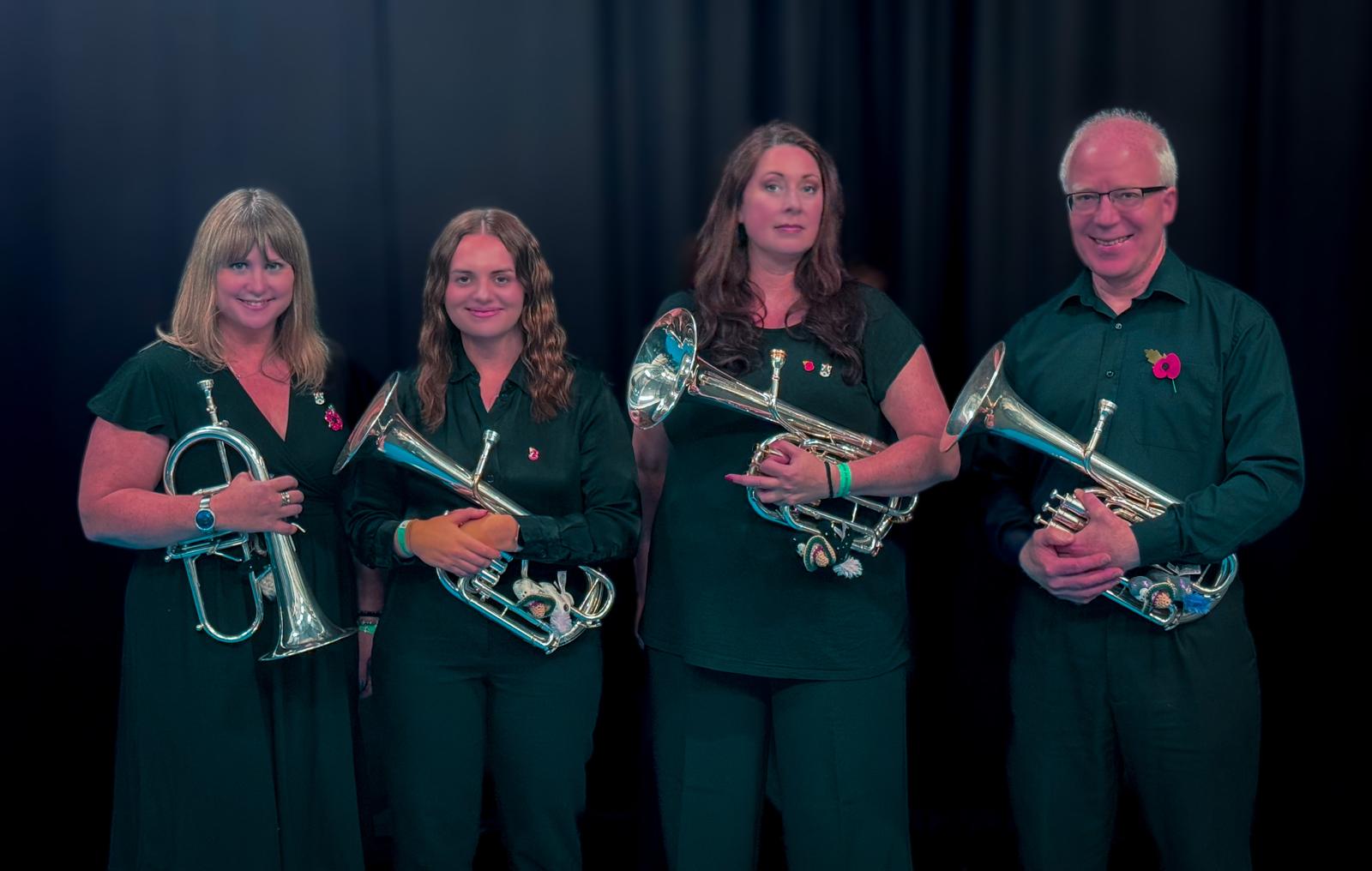
The Horn Section is another varied section of the band. There are 3 tenor horns and 1 Flugel in a standard band set up. The Flugel has that distinctive horn sound but is pitched the same as the cornet. It is a solo instrument and often works either with the horns or backrow cornets. The player is expected to play duets often with the Repiano, Principal Cornet or Solo Horn. The Tenor Horns, which are used primarily for rhythmic emphasis, work often with the Backrow Cornets and Baritones. The Solo Tenor works closely with the Flugel and plays solos. Did you know? The Flugel is not a member of the Cornet family as is often thought. It is the smallest member of the Tuba family!
- Flugel Horn – Vicky Finlay
- Solo Horn – Jess Wilson
- 1st Horn – Claire Byrom
- 2nd Horn – Andy Vail
- 2nd Horn – Will Haw
The Euphoniums and Baritones
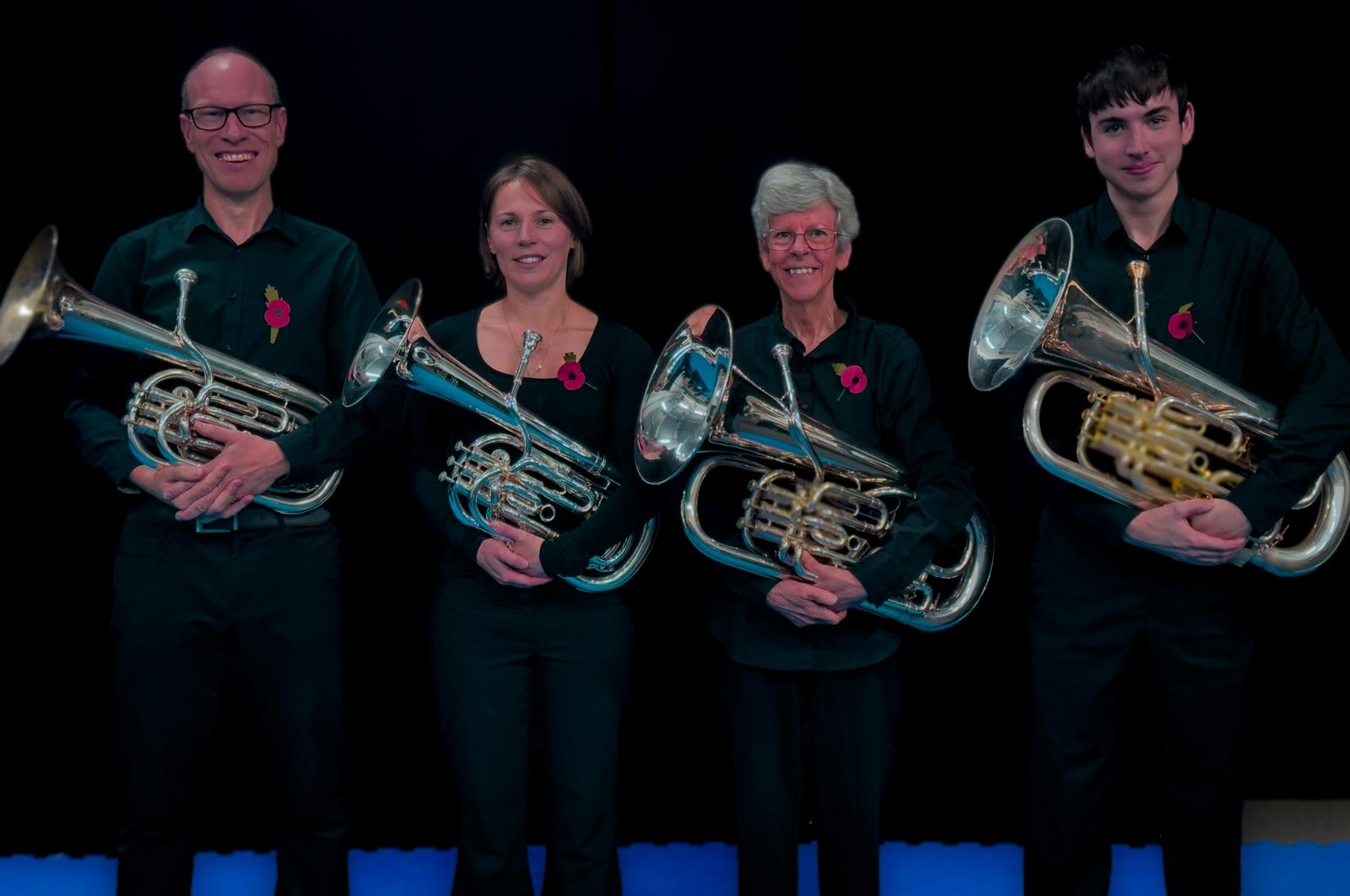
The band has 2 euphoniums and 2 baritones. The euphonium is the 2nd most used solo position following the principal cornet. The solo euphonium is supported by the 2nd euphonium and baritones and the player often plays duets with the principal cornet. The baritones often work with the trombones and horns. They are also used alongside the Euphoniums for counter-melody.
- Solo Euphonium – Dan Vincent
- 2nd Euphonium – Wendy Spencer
- 1st Baritone – Andy Dodd
- 2nd Baritone – Rebecca Williams
Trombones
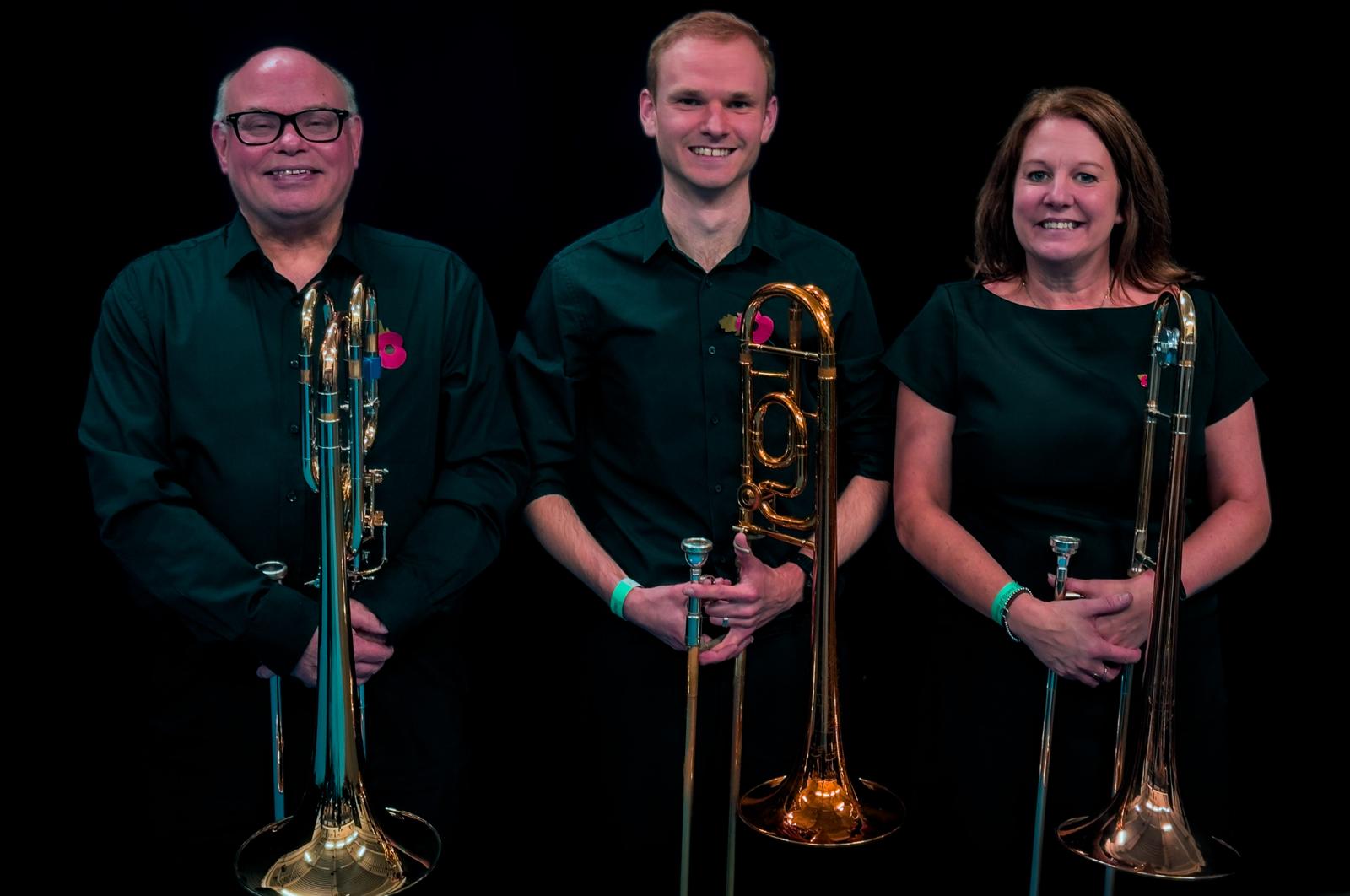
There are 3 trombones in a brass band: 2 tenors and a bass. The bass trombone acts as a bumper end to the bass section but the player also works with the other trombones as part of the trio. The 1st trombone works as a soloist but also closely with the 2nd trombone. As a section the trombones often work with the backrow cornets, horns and baritones supporting the rhythm and balance of the band.
- 1st Trombone – Karen Armfield
- 2nd Trombone – Pete Williams
- Bass Trombone – Brian Kelly
Basses
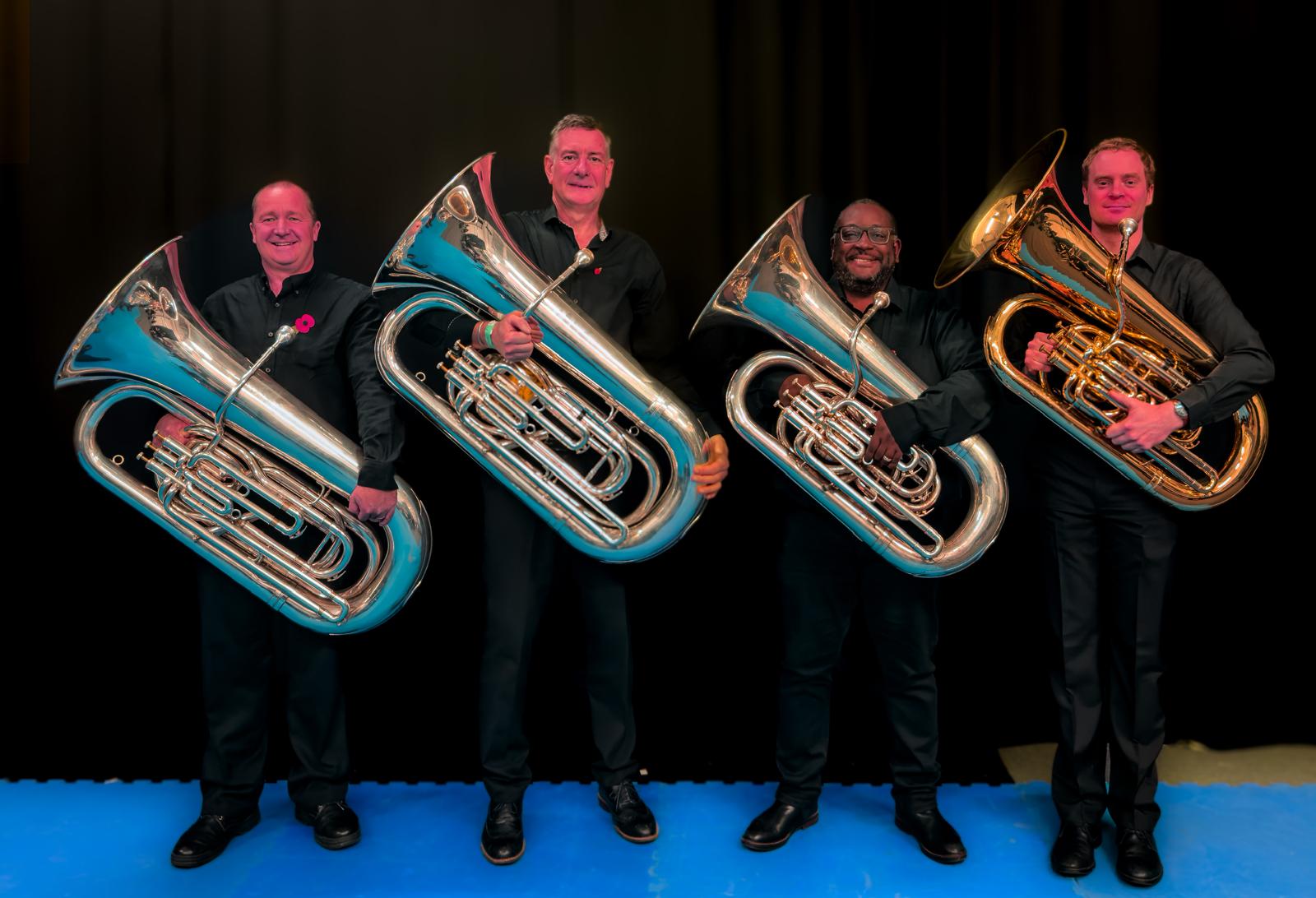
The Basses are the lower section of the band. They give a solid base for the rest of the band to build the balance around and help the pulse of the music. There are 4 basses, 2 Eb and 2 BBb. The Eb basses are slightly smaller than the BBb and the Eb is sometimes also used as a solo instrument.
- Eb Bass – André Clarke
- Eb Bass – Chris Osborn
- BBb Bass – Ian Wagdin
- BBb Bass – Graham Bond
Percussion
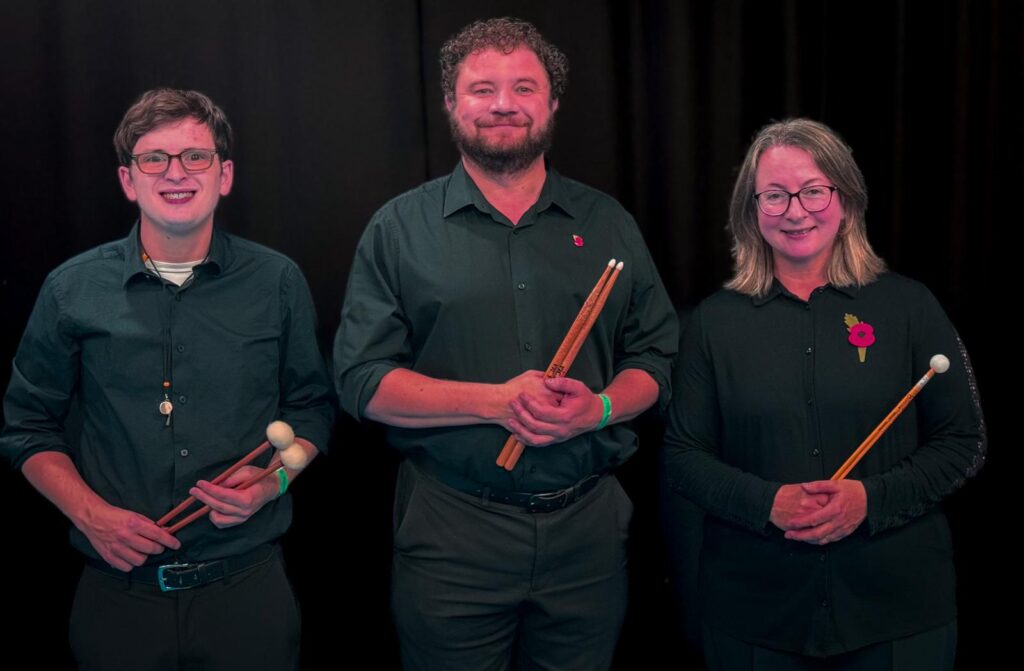
Percussion became a part of the modern contesting brass band in the 1960’s. Brass bands are allowed a full complement of percussion, similar to that seen in an Orchestra or Symphonic Windband. This normally includes full drum kit, cymbals, bass drum, tuned instruments such as timpani, xylophone, glockenspiel, tubular bells and all the trimmings including triangles, bell trees, bongos, tambourines- the list is endless! Brass bands usually have up to 3 percussionists. Some percussionists specialise in kit or tuned percussion and some are great all-rounders.
- Percussionist – Tristan Hall
- Percussionist – Lesley Hardman
- Percussionist – Michael McKeague
Previous Musical Directors
- Matt Ryan Jul 2018 – Jul 2023
- Ian Brownbill Jan 2017 – Feb 2018
- Jason Smith Nov 2014 – Dec 2016
- Stephen Curtis Nov 2009 – Oct 2014
- Alan Hobbins Nov 2008 – Oct 2009
- Iain McKnight Aug 2007 – June 2008
- Kevin Gibbs April 2004- June 2007
- Pete Lockett Jan 2004- April 2004
- Ewan Campbell 2002- Dec 2003
- Stuart Barton 2001
- Christian Tenfiord 2000 – 2001
- Selmer Simonsen 1999 – 2000
- Martin Obermuller 1995 – 1999
- Mike Cotter 1995
- Geoff Williams 1994 – 1995
- Pete Lockett 1988-1994
- Stanley Thomas 1981-1984
- Paul Crashley 1969 – 1981
- Joe Woodward 1967 – 1969
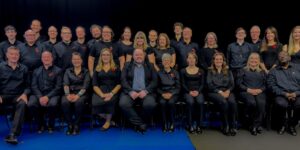

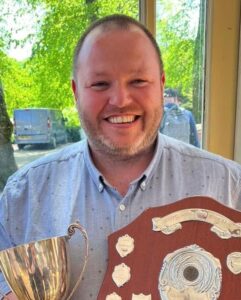 Adie Smith is our Musical Director.
Adie Smith is our Musical Director.